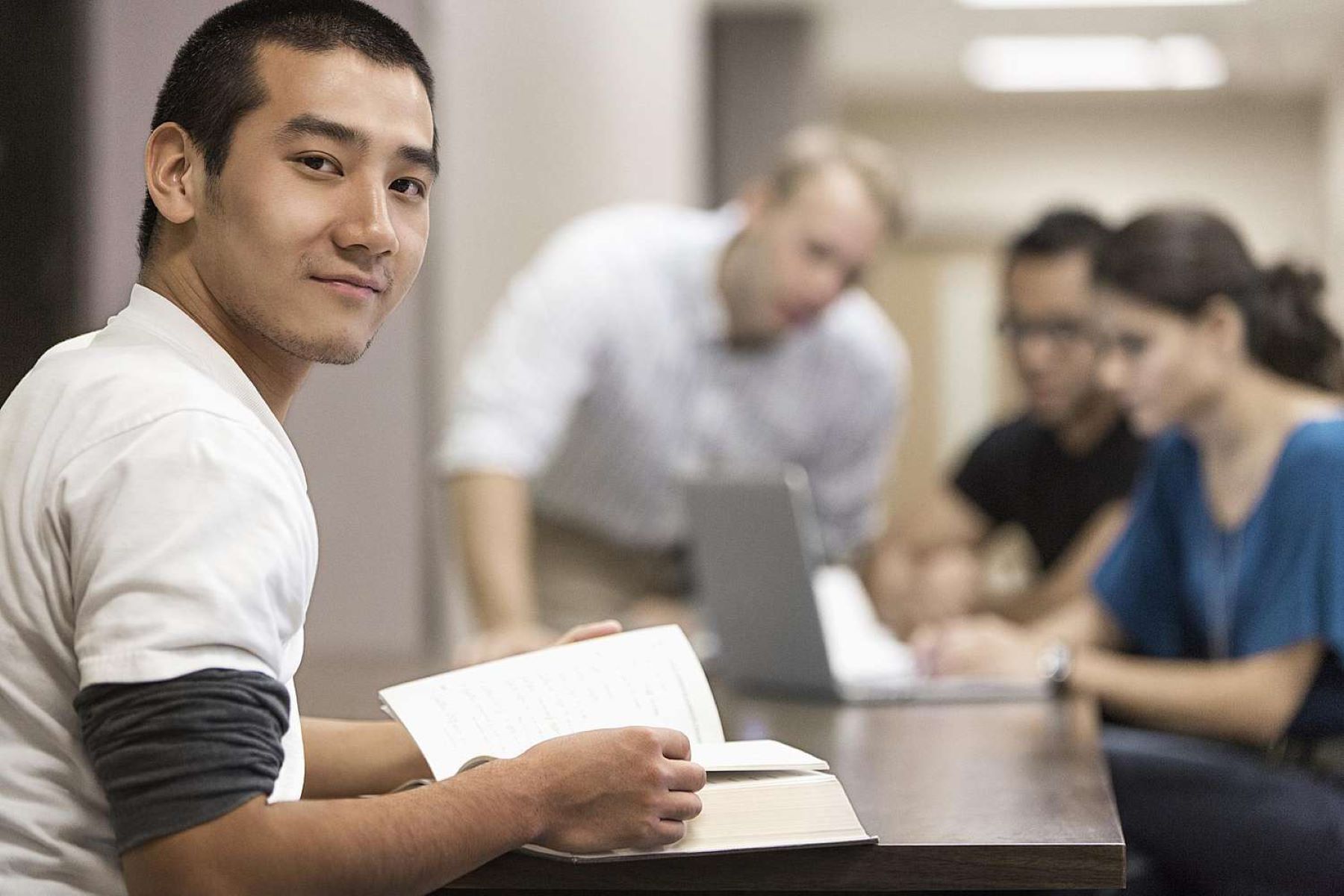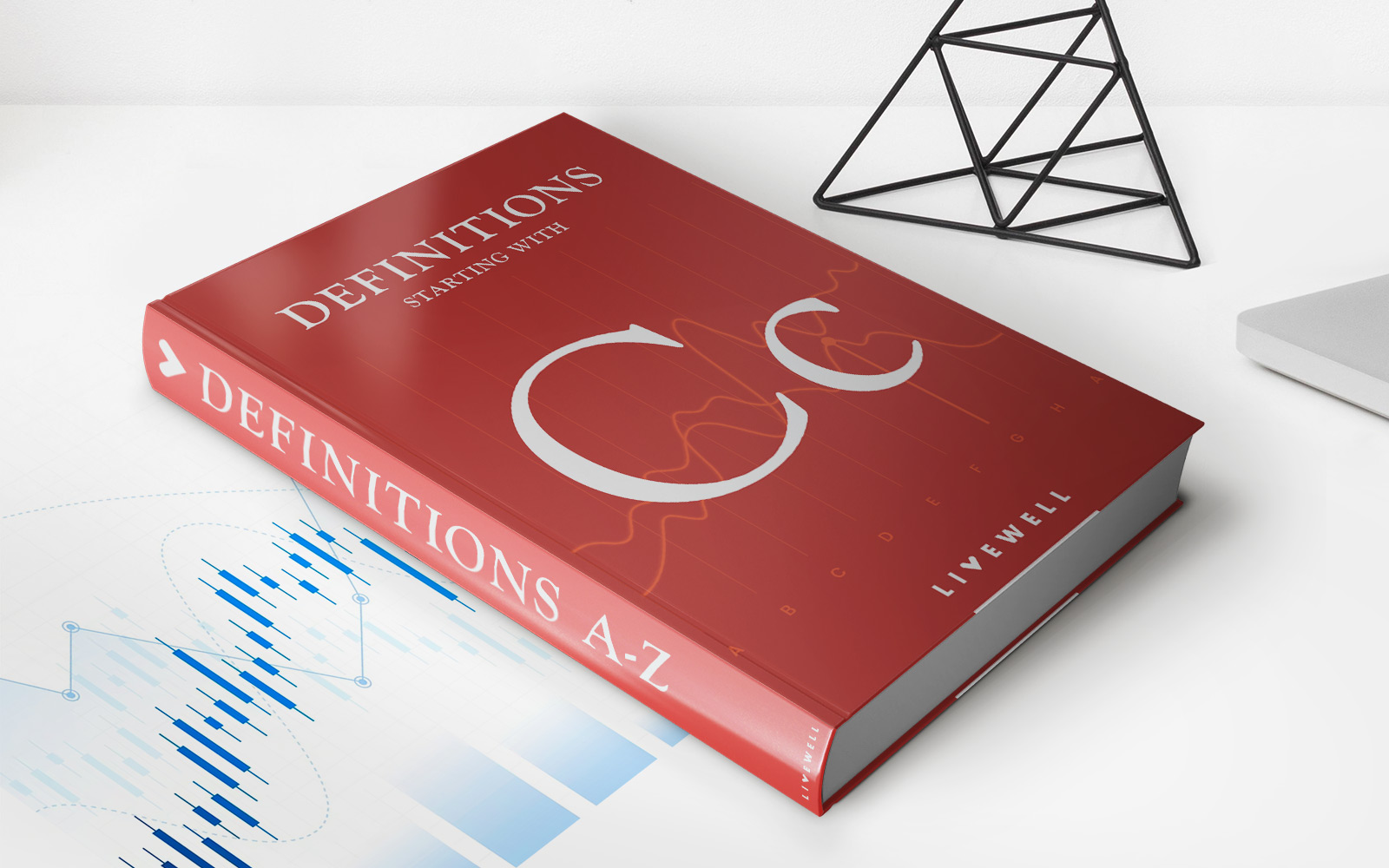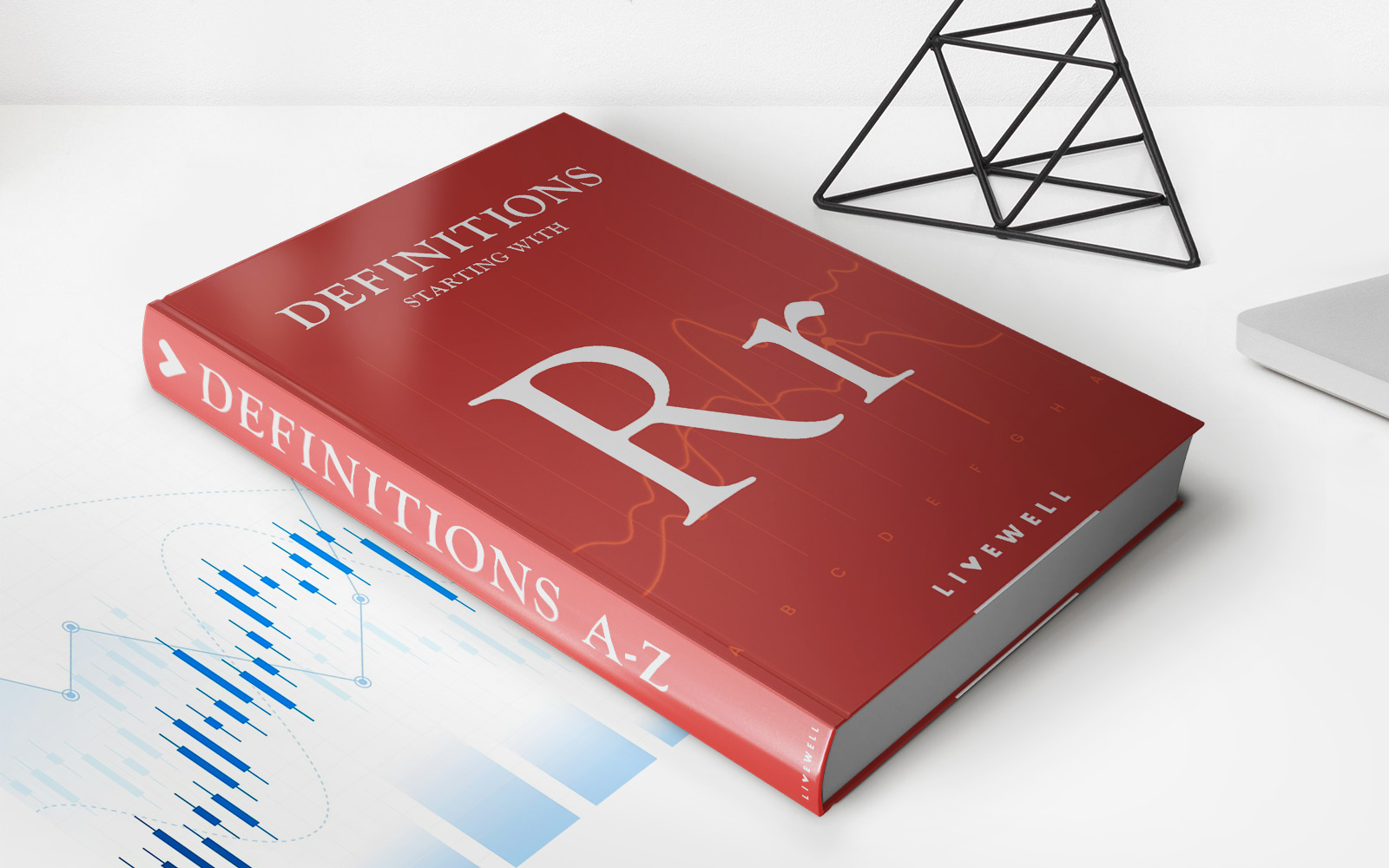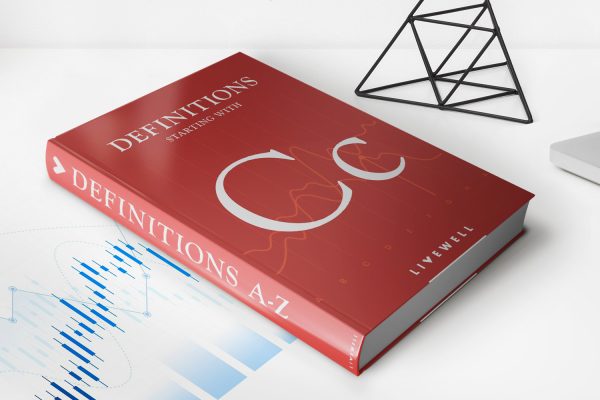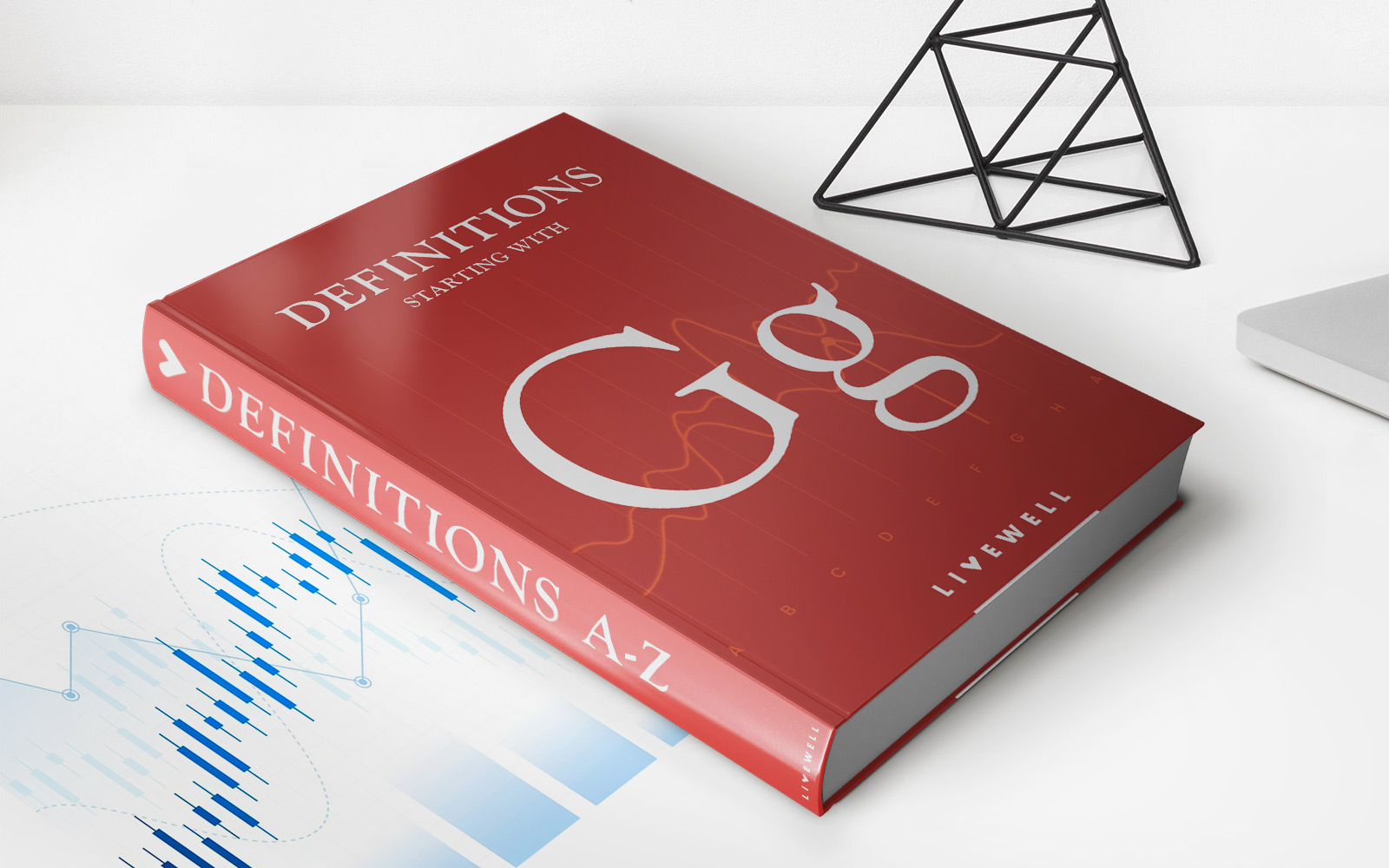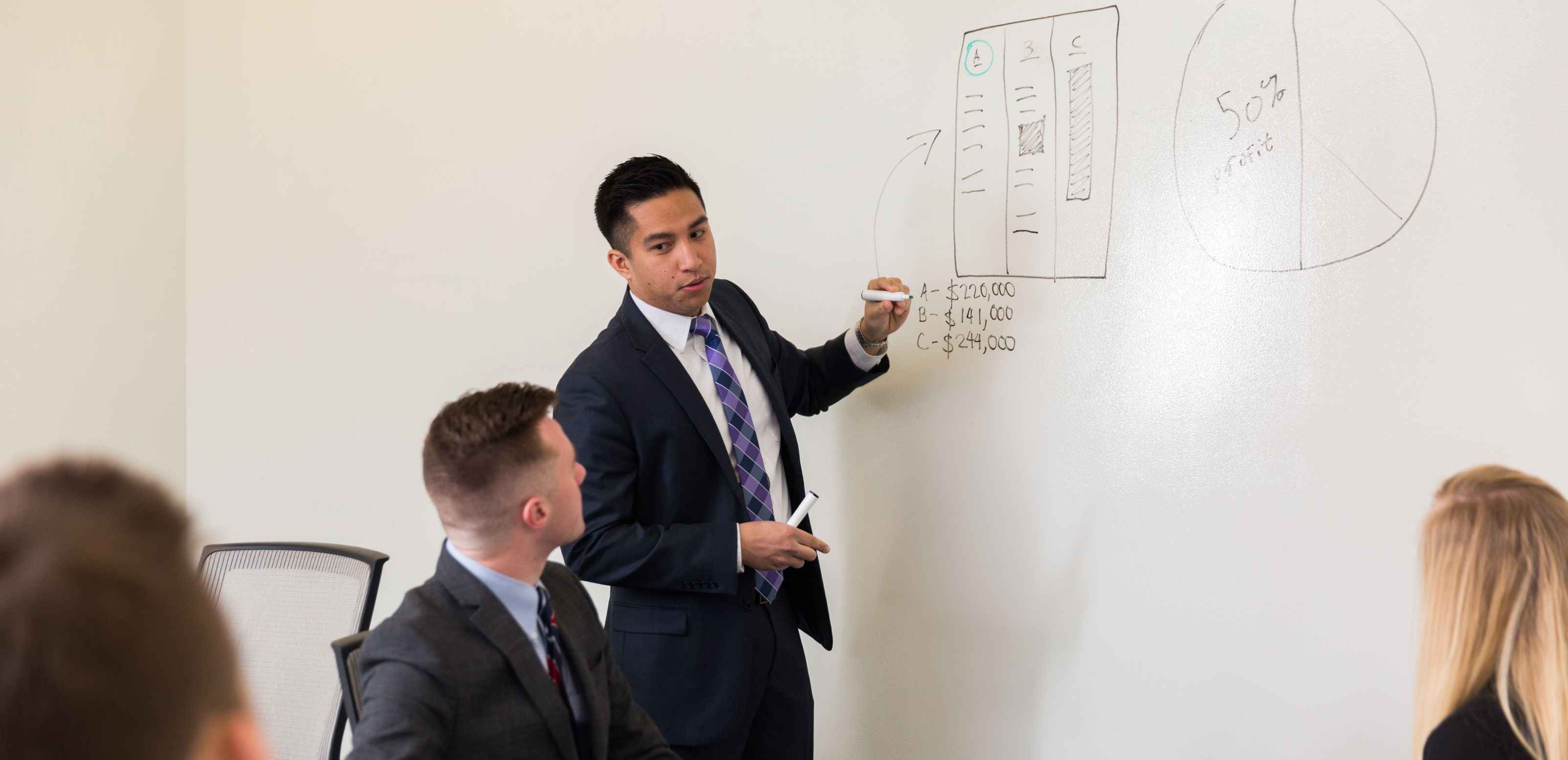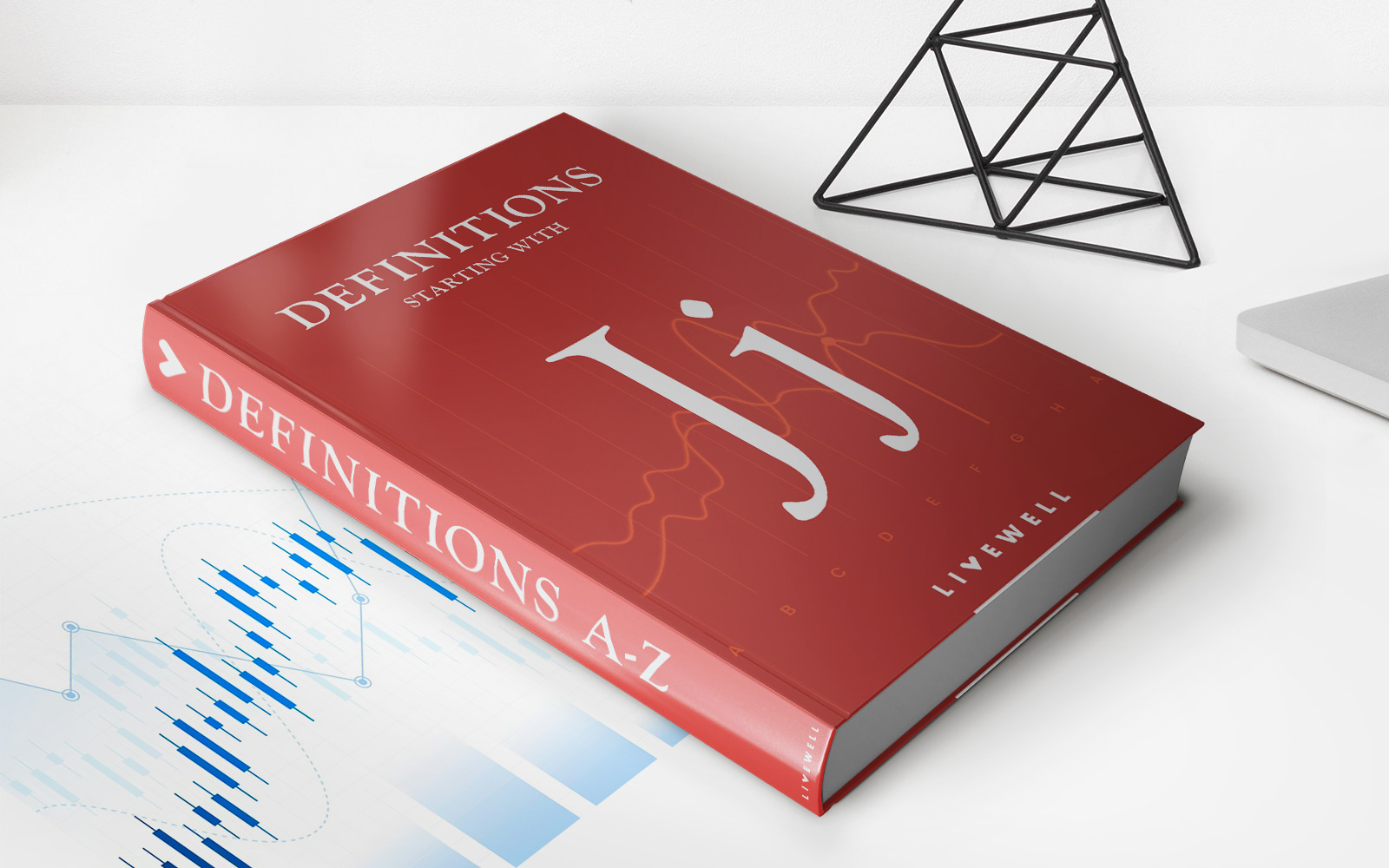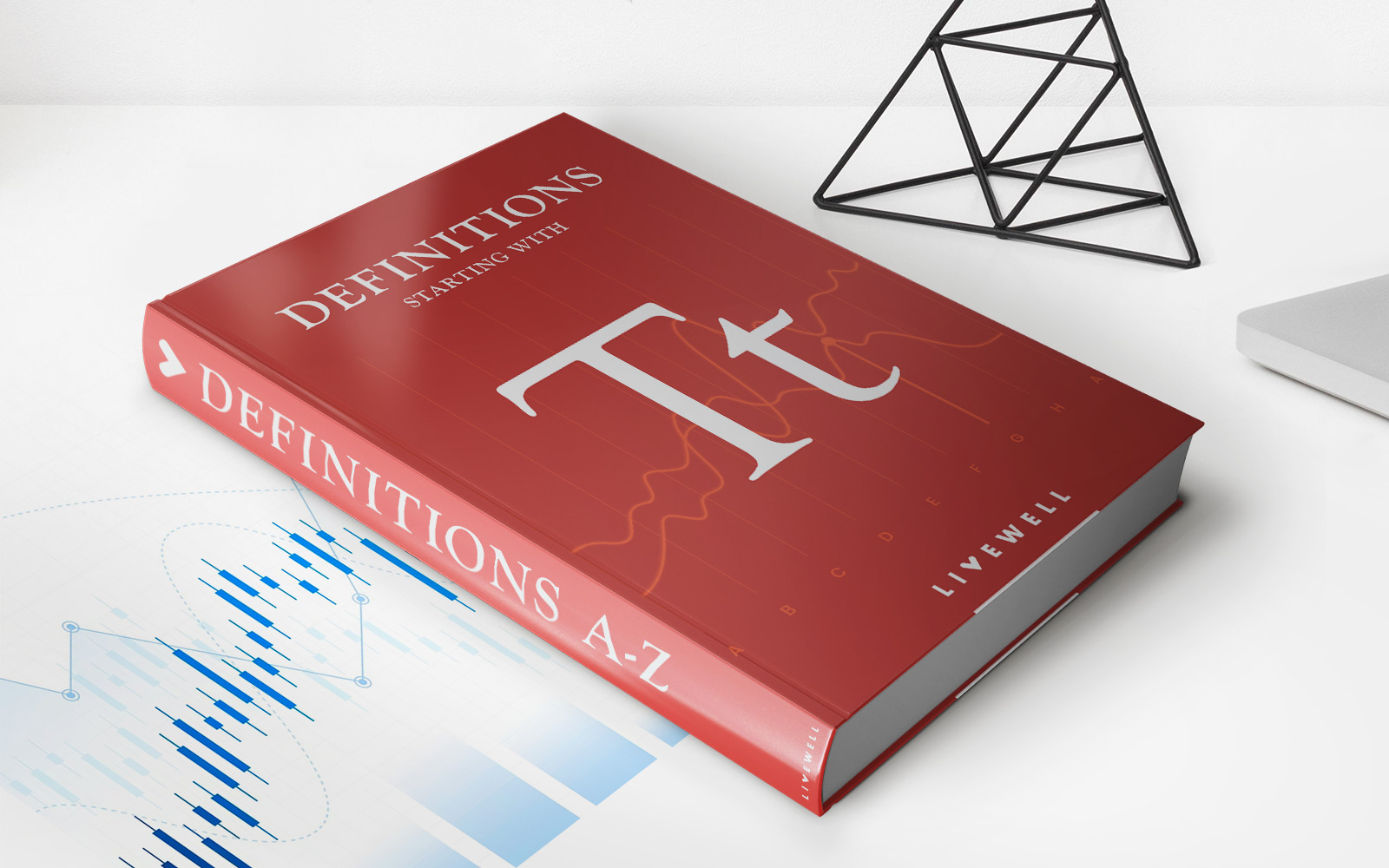

Finance
What Is Credit Recovery Class
Modified: January 8, 2024
Learn about credit recovery classes and how they can help improve your financial situation. Gain valuable knowledge in finance and take control of your credit with these educational courses.
(Many of the links in this article redirect to a specific reviewed product. Your purchase of these products through affiliate links helps to generate commission for LiveWell, at no extra cost. Learn more)
Table of Contents
- Introduction
- Definition of Credit Recovery Class
- Purpose and Benefits of Credit Recovery Class
- Eligibility for Credit Recovery Class
- How Credit Recovery Classes Work
- Curriculum and Course Options
- Implementation and Delivery Methods
- Differences between Credit Recovery and Traditional Classes
- Success Rates and Effectiveness of Credit Recovery Classes
- Challenges and Criticisms of Credit Recovery Classes
- Conclusion
Introduction
Welcome to the comprehensive guide on credit recovery classes. In today’s fast-paced world, educational institutions are constantly looking for innovative ways to help students succeed academically. One such method is credit recovery classes, which provide students with an opportunity to make up for failed or incomplete coursework and earn the credits needed for graduation.
Credit recovery classes are designed to support students who have fallen behind in their studies, allowing them to catch up and stay on track towards their educational goals. With the flexibility and personalized approach of credit recovery classes, students can overcome academic challenges and graduate on time with their peers.
In this article, we will explore the definition, purpose, and benefits of credit recovery classes. We will also discuss the eligibility requirements, how these classes work, the curriculum options available, and the implementation methods used. Furthermore, we will examine the differences between credit recovery classes and traditional classes, as well as the success rates and effectiveness of credit recovery programs. Finally, we will address some of the challenges and criticisms associated with credit recovery classes.
Whether you are a student, parent, educator, or simply curious about educational programs, this guide will provide you with a comprehensive understanding of credit recovery classes and their significance in the educational landscape.
Definition of Credit Recovery Class
A credit recovery class is an educational program designed to help students who have failed a course or are missing credits to make up for the lost or incomplete coursework. It provides an opportunity for students to recover the necessary credits needed for graduation or academic advancement.
Typically, credit recovery classes are offered to high school students, although they may also be available at the middle school and college levels. These classes are usually offered in a variety of subjects, including math, science, English, history, and foreign languages.
Unlike traditional classrooms, credit recovery classes are focused on specific content and skills that students may have missed or were unable to master during the regular school year. The goal is to provide targeted instruction and support to help students grasp the necessary concepts and demonstrate their understanding.
Credit recovery classes can be conducted in various formats, including in-person instruction, online courses, or a combination of both. This flexibility allows students to participate in credit recovery programs regardless of their schedule or location.
It is important to note that credit recovery classes are not a shortcut to earning a diploma or degree. Instead, they serve as an intervention to help students who have encountered academic setbacks get back on track towards meeting the educational requirements for graduation.
Now that we have defined credit recovery classes, let’s explore their purpose and the benefits they offer to students.
Purpose and Benefits of Credit Recovery Class
The primary purpose of credit recovery classes is to provide students with an opportunity to recover credits they may have lost due to failing a course or not completing the required coursework. These classes aim to help students catch up academically and stay on track towards graduation.
Here are some key benefits of credit recovery classes:
- Individualized Learning: Credit recovery classes offer personalized instruction and support tailored to the needs of each student. This allows students to focus on specific content and skills they need to master, ensuring targeted learning and skill development.
- Flexibility: Unlike traditional classroom settings, credit recovery classes often provide flexible scheduling options. Students may have the opportunity to participate in these classes during regular school hours, after school, or even online. This flexibility allows for personalized learning paths and accommodates students with diverse schedules and needs.
- Customized Pace: One of the significant advantages of credit recovery classes is the ability for students to progress at their own pace. Students can work through the material at a speed that suits their learning style and needs, enabling them to grasp concepts more effectively.
- Increased Engagement: Credit recovery classes often incorporate interactive and engaging teaching methods to maintain student interest and involvement. These classes may use multimedia resources, practical applications, and real-world examples to make the learning experience more relevant and engaging.
- Supportive Environment: Credit recovery classes usually have low student-to-teacher ratios, allowing for more individualized attention and support. Teachers can provide additional guidance and one-on-one assistance, helping students overcome academic hurdles and build confidence in their abilities.
- Opportunity for Academic Improvement: By participating in credit recovery classes, students have a chance to improve their academic standing. Successfully completing the coursework can lead to an improved GPA, which can open doors to higher education opportunities and future professional endeavors.
Overall, credit recovery classes offer a second chance for students to regain lost credits and stay on track towards graduation. With their individualized approach, flexibility, engagement, and support, these classes provide students with the tools and resources they need to succeed academically and achieve their educational goals.
Next, let’s delve into the eligibility requirements for credit recovery classes and how they work.
Eligibility for Credit Recovery Class
In order to participate in a credit recovery class, students typically need to meet certain eligibility requirements. These requirements may vary depending on the educational institution and the specific credit recovery program. Here are some common eligibility criteria:
- Failed Course or Incomplete Credits: The primary eligibility criterion for credit recovery classes is having failed a course or not successfully completing the required coursework. Students who have received a failing grade or have missing credits in a specific subject may be eligible for a credit recovery class in that subject.
- Grade Level: Credit recovery classes are primarily offered to high school students. However, depending on the educational institution, middle school and college students may also have access to credit recovery programs. The availability of credit recovery classes may vary depending on the grade level and specific school policies.
- Approval from School Administration: Before enrolling in a credit recovery class, students may need to seek approval from their school administration or guidance counselor. This is to ensure that the credit recovery program aligns with the student’s educational goals and the school’s academic requirements.
- Attendance and Behavior: Some schools may have attendance and behavior requirements for students to be eligible for credit recovery classes. Students who have excessive absences, disciplinary issues, or a history of poor behavior may have additional criteria to fulfill before being granted access to credit recovery programs.
It is important for students to consult with their school administrators or guidance counselors to determine specific eligibility requirements for credit recovery classes at their institution.
Additionally, it is essential for students to approach credit recovery classes with a positive mindset and a genuine willingness to put in the effort to improve academically. These classes require commitment and dedication from students to ensure maximum benefit and successful completion of the coursework.
Now that we have discussed the eligibility requirements, let’s explore how credit recovery classes work and the different approaches used in their implementation.
How Credit Recovery Classes Work
Credit recovery classes operate differently from traditional classes in terms of structure and delivery. Here is an overview of how credit recovery classes typically work:
- Identifying Learning Gaps: The first step in a credit recovery program is to identify the specific learning gaps a student has in a particular subject. This is done through various assessments, such as diagnostic tests, previous coursework evaluation, or teacher recommendations. By identifying the areas of weakness, instructors can develop a targeted learning plan for each student.
- Personalized Learning Plan: Once the learning gaps are identified, a personalized learning plan is created for the student. This plan outlines the specific objectives, content, and skills that need to be covered in order to recover the required credit. The learning plan is tailored to the student’s individual needs and is designed to address their specific learning gaps.
- Instruction and Support: In credit recovery classes, students receive focused instruction and support from qualified teachers. The instruction may take place in a traditional classroom setting, through online platforms, or a combination of both. Teachers utilize various teaching methods, such as direct instruction, group activities, and one-on-one guidance to facilitate student learning and understanding of the subject matter.
- Completion of Assignments and Assessments: Students are assigned coursework and assessments that align with the learning objectives outlined in their personalized learning plan. These assignments may include readings, projects, quizzes, or exams, depending on the subject and the credit recovery program. Regular monitoring and feedback from instructors help students stay on track and make progress towards completing the required coursework.
- Progress Monitoring: Throughout the credit recovery program, students’ progress is closely monitored to ensure they are meeting the learning objectives and making sufficient academic progress. Instructors provide feedback, track completion of assignments, and offer additional support or interventions as needed to help students succeed.
- Assessment and Credit Completion: Once students have successfully completed the assigned coursework and assessments as outlined in their personalized learning plan, they are eligible to receive the credit for the recovered course. The specific grading criteria and requirements for credit completion may vary depending on the institution and the credit recovery program.
Credit recovery classes aim to provide students with a structured and supportive environment to catch up on missed coursework and earn the necessary credits for graduation. By offering personalized learning plans, targeted instruction, and ongoing support, credit recovery programs help students overcome academic challenges and achieve academic success.
Next, let’s explore the different curriculum and course options available in credit recovery classes.
Curriculum and Course Options
Credit recovery classes offer a range of curriculum and course options to accommodate the diverse needs and interests of students. The specific curriculum and available courses may vary depending on the educational institution and the credit recovery program. Here are some common curriculum and course options in credit recovery classes:
- Core Subjects: Credit recovery programs typically offer courses in core subjects such as math, science, English, and history. These courses align with the standard curriculum requirements and cover the essential concepts and skills in each subject.
- Elective Courses: Depending on the institution, credit recovery classes may also offer elective courses. These courses allow students to explore their interests and take subjects beyond the core curriculum. Elective courses may include subjects like art, music, computer science, foreign languages, or physical education.
- Advanced Placement (AP) and Honors Courses: Some credit recovery programs may offer advanced placement or honors courses for academically ambitious students. These courses allow students to earn college credit or demonstrate their proficiency in a particular subject at an advanced level.
- Individualized Study: In certain cases, credit recovery programs may provide the option for students to pursue individualized study. This allows students to focus on specific topics they need to master or complete a course they were unable to take during the regular school year.
- Credit Retrieval Options: Credit recovery classes may also offer different options for credit retrieval. This could include full-length courses, condensed courses that cover essential material, or modular courses that target specific learning objectives. These options provide flexibility for students to recover credits efficiently and effectively.
It is worth noting that the availability of specific courses and curriculum options may vary depending on the educational institution and the credit recovery program. Students should consult with their school administrators or guidance counselors to determine the appropriate course selections based on their academic needs and goals.
Now that we have explored the curriculum and course options, let’s discuss the implementation and delivery methods of credit recovery classes.
Implementation and Delivery Methods
Credit recovery classes have evolved to offer various implementation and delivery methods to meet the diverse needs of students. These methods may vary based on the educational institution and the specific credit recovery program. Here are some common implementation and delivery methods:
- In-Person Instruction: In-person credit recovery classes are conducted in a traditional classroom setting within the school premises. Students attend classes with a qualified instructor who provides direct instruction, facilitates discussions, and offers one-on-one guidance. This method allows for immediate feedback, active engagement, and real-time interactions between students and teachers.
- Online Courses: Many credit recovery classes are offered online, allowing students to access coursework at their convenience. Online credit recovery programs often use learning management systems (LMS) that provide students with access to learning materials, assignments, and quizzes. Students can progress through the course at their own pace and communicate with their instructors through virtual platforms.
- Blended Learning: Blended learning combines both in-person instruction and online learning. Students attend face-to-face classes with teachers for a portion of their credit recovery program, while also completing online coursework and assignments. This hybrid approach provides students with the benefits of direct instruction and the flexibility of online learning.
- Intensive Summer Programs: Some credit recovery classes are offered as intensive summer programs, allowing students to focus solely on their credit recovery coursework during the summer break. These programs often have condensed timelines and rigorous schedules to help students catch up on missed credits in a shorter period of time.
- Tutoring and Small Group Sessions: In addition to regular class instruction, credit recovery programs may offer tutoring or small group sessions. These sessions provide additional support and individualized attention to students who need extra assistance in understanding the course material. Tutors or academic support staff work closely with students to reinforce learning and address specific challenges.
It is important to note that the availability of implementation and delivery methods may vary depending on the credit recovery program and the resources of the educational institution. It is crucial for students to familiarize themselves with the options available at their school and select the method that suits their learning style, schedule, and needs.
Now that we understand the implementation and delivery methods, let’s explore the differences between credit recovery classes and traditional classes.
Differences between Credit Recovery and Traditional Classes
Credit recovery classes differ from traditional classes in several key ways. These differences stem from their purpose, focus, and delivery methods. Here are some notable distinctions between credit recovery classes and traditional classes:
- Purpose: The primary purpose of credit recovery classes is to help students recover lost or incomplete credits and stay on track towards graduation. Traditional classes, on the other hand, aim to provide a comprehensive education in various subjects.
- Focus: Credit recovery classes are focused on specific content and skills that students may have missed or struggled with in previous coursework. Traditional classes cover a wider range of content and aim to provide a broader understanding of the subject matter.
- Structure: Traditional classes follow a set schedule and timeline throughout the academic year, usually with a predetermined curriculum and pacing. Credit recovery classes often offer more flexibility in terms of scheduling and pace, allowing students to progress at their own speed and complete coursework on an individualized timeline.
- Delivery Methods: Traditional classes are typically held in-person with face-to-face instruction, while credit recovery classes can be delivered through various methods. These may include in-person instruction, online courses, blended learning, or intensive summer programs.
- Class Sizes: Traditional classes often have larger class sizes, with a higher student-to-teacher ratio. Credit recovery classes generally have smaller class sizes, allowing for more individualized attention and support from the instructor.
- Credit Recovery Requirements: In credit recovery classes, students only need to recover specific coursework or credits they have failed or missed. In traditional classes, students must complete the entire curriculum and meet all the course requirements to earn credit.
It is important to note that while credit recovery classes offer a more tailored and flexible learning experience, they are not intended to replace the comprehensive education provided by traditional classes. Credit recovery classes serve as an intervention to help students who have encountered academic setbacks catch up and meet the necessary requirements for graduation.
Now that we understand the differences between credit recovery classes and traditional classes, let’s explore the success rates and effectiveness of credit recovery classes.
Success Rates and Effectiveness of Credit Recovery Classes
Credit recovery classes have shown promising results in helping students recover lost credits and improve their academic standing. While success rates and effectiveness may vary based on individual circumstances and program implementation, there are several factors that contribute to the overall effectiveness of credit recovery classes.
Here are some key points to consider regarding the success rates and effectiveness of credit recovery classes:
- Improved Graduation Rates: One of the primary indicators of the success of credit recovery classes is their impact on graduation rates. By providing students with an opportunity to recover missed credits, these classes can contribute to increased graduation rates by helping students meet the necessary requirements for graduation.
- Individualized Instruction: Credit recovery classes often provide personalized and targeted instruction based on the specific learning gaps of each student. This individualized approach can improve student engagement, understanding, and mastery of the subject matter, leading to higher success rates in credit recovery programs.
- Flexible Learning Formats: The flexibility offered by credit recovery classes, such as online courses or blended learning, allows students to learn at their own pace and in their own preferred environment. This flexibility can enhance student motivation and engagement, ultimately improving their success and completion rates.
- Responsive Support Systems: Credit recovery programs often have support systems in place to provide additional guidance to students. This may include one-on-one tutoring, academic counseling, or targeted interventions to address specific learning challenges. These support systems can significantly contribute to the effectiveness of credit recovery classes.
- Ongoing Assessment and Feedback: Regular assessment and feedback are integral parts of credit recovery classes. By continuously monitoring student progress and providing timely feedback, instructors can identify areas of improvement and adjust instruction accordingly. This ongoing assessment helps students stay on track and improve their mastery of the subject matter.
- Retention of Learning: The effectiveness of credit recovery classes can also be determined by the extent to which students retain the knowledge and skills acquired during the program. While the main objective is credit recovery, ensuring that students have a strong comprehension of the material can positively impact their future academic success.
It is important to note that individual student commitment, effort, and motivation also play a significant role in the success of credit recovery classes. Students who actively participate, complete assignments, and seek help when needed are more likely to achieve positive outcomes in credit recovery programs.
While credit recovery classes can be effective in helping students regain lost credits and improve academic performance, it is essential to continually evaluate and refine these programs to ensure their continued efficacy in addressing the diverse needs of students.
Now, let’s explore the challenges and criticisms associated with credit recovery classes.
Challenges and Criticisms of Credit Recovery Classes
While credit recovery classes have proven to be beneficial for many students, there are some challenges and criticisms associated with these programs. It’s important to be aware of these factors to ensure a comprehensive understanding of credit recovery classes. Here are some common challenges and criticisms:
- Inadequate Instruction: One criticism of credit recovery classes is that the quality of instruction may vary. Due to factors such as high teacher turnover, limited resources, or the use of online platforms, some students may receive instruction that lacks the depth and rigor of traditional classes.
- Retaining Subject Matter: Credit recovery classes often focus on quickly covering key concepts and skills, which may result in a shallow understanding of the subject matter. It is crucial for students to actively engage with the material and ensure they have a solid understanding of the content beyond the requirements for credit recovery.
- Reliance on Technology: As more credit recovery programs move towards online platforms, students may face challenges with technology access, connectivity, or computer literacy. These barriers can hinder their ability to fully engage with the coursework and negatively impact their learning experience.
- Motivation and Accountability: Students in credit recovery classes may struggle with motivation and accountability. Without the structure and accountability of traditional classes, students may find it challenging to stay on track, complete assignments, and seek help when needed. Maintaining student engagement and promoting a sense of responsibility can be a significant challenge.
- Social Interaction: Credit recovery classes, especially those delivered online, may lack the social interaction and collaborative learning experiences found in traditional classes. Limited peer interaction and the absence of face-to-face communication can impact a student’s overall learning experience and sense of community.
- Stigma: Some students may experience a stigma associated with participating in credit recovery classes. This perception can be influenced by societal expectations or the perceived notion that credit recovery classes are for students who are not performing well academically. Addressing this stigma is crucial to ensure that students feel supported and motivated to participate in credit recovery programs.
It is important for educational institutions and credit recovery programs to address these challenges and criticisms by providing adequate resources, ongoing support, and monitoring the quality of instruction. Implementing strategies to promote student engagement, motivation, and a sense of community can also enhance the effectiveness of credit recovery classes.
Despite these challenges, credit recovery classes continue to offer a valuable opportunity for students to make up lost credits and graduate on time. By addressing the criticisms constructively, institutions can further improve the effectiveness and success of credit recovery programs.
Now, let’s conclude our comprehensive guide on credit recovery classes.
Conclusion
Credit recovery classes play a crucial role in supporting students who have faced academic setbacks in their educational journey. These classes offer a second chance for students to recover lost credits, stay on track towards graduation, and achieve their academic goals. By providing personalized instruction, flexibility, and targeted support, credit recovery classes empower students to overcome challenges and succeed academically.
Throughout this comprehensive guide, we have explored the definition, purpose, and benefits of credit recovery classes. We have discussed the eligibility requirements, how these classes work, the curriculum and course options available, and the implementation and delivery methods used. We have also examined the differences between credit recovery classes and traditional classes, the success rates and effectiveness of credit recovery programs, and the challenges and criticisms associated with these classes.
While credit recovery classes have shown promising results in helping students regain lost credits and improve academic performance, it is important to address the challenges and criticisms constructively. Educational institutions should strive to provide high-quality instruction, ongoing support, and strategies to promote student engagement and motivation. Additionally, addressing the stigma associated with credit recovery classes and ensuring equitable access to resources and technology are essential for the success of these programs.
Overall, credit recovery classes play a vital role in ensuring that students have the opportunity to overcome setbacks and achieve their educational goals. By providing a supportive and individualized approach, these classes pave the way for academic success and create a pathway to graduation for students who may have otherwise been left behind. It is through the continued improvement and enhancement of credit recovery programs that we can truly make a positive impact on the educational trajectory of students.
